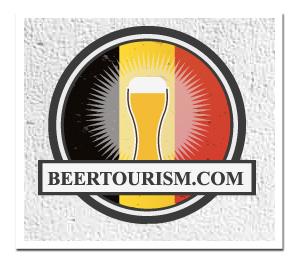It’s been a long time now that I’ve been wanting to write a post about Belgian beer. After all, this blog is mostly about Belgian culture and my experiences with it and beer is very much an essential part of Belgian culture. Although I really love Belgian beer and will rarely ever turn down the opportunity to taste a new one, I’m still no expert. That’s why I am very excited today to bring you the following guest post from the Belgian beer enthusiasts at Beer Tourism. I do hope you enjoy the informative introduction to Belgian beers that they have so expertly prepared for my readers and of course, I hope they inspire you to embark on your own Belgian beer adventure. It will be delicious, I can guarantee that!
……………………………………………………………………………………………………….
“Name 10 famous Belgians,” used to be a common pub game for British drinkers, a jokey comment on this extraordinary little nation’s supposed lack of impact on the world stage. Had the challenge been to name 10 Belgian beers, and great ones at that, we’d probably do better now as word continues to spread on the world’s greatest beer culture.
Germany may have more breweries and the Czechs drink more litres per person during the course of a year but Belgium’s love affair with the brewer’s art is as deep and complex as it is long; as rooted in the countryside, cuisine and culture of the nation as it is diverse and overwhelming to the outsider.
Why Belgium has developed this wonderfully varied and celebratory beer culture is not easily explained. The filthy water of the Middle Ages was reason enough to drink safe, often church-made beer instead, and the small, independently-minded abbeys fostered the artisanal methods, localism and purity that are such fashionable concepts in the food world today.
While small, Belgium is very much a country of regions – it was only forged in 1830 – each very proud of its individual character, which, of course, include a distinctive beer style. It is Burgundian and Flemish, Dutch and French, the cockpit and the crossroads of Europe where wine-drinking Latin Europe fades into beer-drinking Germanic Europe.
To survey the diversity of Belgian beer in detail is the work of a lifetime, but some of the better known divisions include the following:
The Trappists
Six of the eight Trappist breweries are in Belgium, but the order’s brewing tradition is relatively modern. The first Trappist brewery – Westmalle –
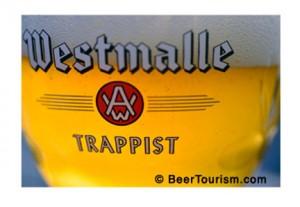
Abbey Beers
Belgium owes its brewing culture to its monks, many of whom arrived as refugees from the anti-clerical fervour of the French revolution. Abbey beers can simply be branded to celebrate or exploit this historical connection, though ‘Certified Abbey Beers’ are made with a genuine link to a monastery.
Both Trappist and Abbey beers tend to produce traditional Dubbel and Tripel beers, which with Enkels (enkel means single in Dutch and is now no longer brewed) reflected the Holy Trinity and the alcoholic strength of the beer. Some now produce extra strong Quadrupels.
Lambic
Lambic is the traditional beer of Pajottenland, close to Brussels. It is spontaneously fermented using wild yeasts making it dry, almost like wine or cider,
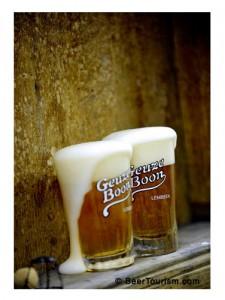
Lambics are often blended or sweetened and come in a bewildering array of styles, many of which are only now reaching an international audience.
Geuze is bottle refermented lambic which will keep and improve for up to 20 years. Faro is a weaker version with added sugars. Kriek lambic adds morello cherries for a dry, sour taste, and fruit lambics have taken the style around the world, although not all are genuine lambics.
Wheat Beer
Wheat beer in English, wit bier in Dutch and bière blanche in French (and many of Belgium’s varieties come from French-speaking Wallonia), nearly died out in the 1970s, until an enterprising young farmer thought he’d try to revive the style in his village. You’ll know how successful he was when you learn the village was called Hoegaarden.
Belgian brewers often add spices to their wheat beers, coriander is the most popular, a reminder of the time when they brewed entirely without hops and flavoured with a ‘gruit’ mix of herbs and spices. They are cloudy and refreshing, wonderful on a summer’s day, and brewed across the country in a multitude of flavours.
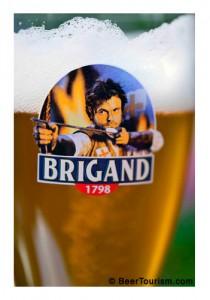
They can be strong and a deep, beautiful gold or much lighter in both color and strength. Belgium’s golden ales are not overly strong in hops or spices and provide a good introduction to more complex flavours if you’re expanding your palate from a lifetime of lager drinking as they often employ pilsner malts.
Duvel, meaning devil in Flemish dialect, is one of the most popular internationally and devilish imagery is common across the type. Belgians love them too, particularly in Wallonia, though you’ll find them everywhere. Some were inspired by British troops’ desire for a taste of home while fighting in Belgium.
Red Ales
The red ales are the pride of West Flanders, coloured by the dark malts used to produce them and often sold as blends, like geuze. They also share that style’s tendency for a sour flavor, although generally in moderation.
Based on the old English porters, red ales are often spontaneously fermented and aged in oak barrels. Tasters commonly identify strong, dark fruit flavours and these ales are the most wine-like of all beers.
Saisons
In the dark, wet winter months, the farmers of Wallonia would set up their brewing kettle to prepare a refreshing and not-too-strong ale to keep their workers refreshed through the busy summer.
Saisons used to be much weaker than they are now, a scythe and a strong ale not being the happiest of combinations. They retain the strong hoppiness of their predecessors and are benefitting from the resurgence in traditional beer culture that Belgium is currently enjoying. Sometimes spiced or made using wheat, today’s saisons are carbonated and, while still designed to refresh, tend to start at around 5% ABV.
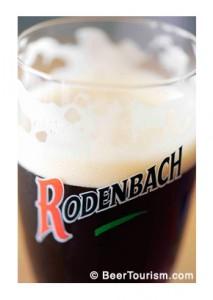
If West Flanders is red, its eastern neighbor is brown. Oud Bruin (old brown) are blends and approach lambic levels or acidity. Like lambics, an injection of fruit flavours often lightens and sweetens many bruins, and it’s this style – particularly Liefmans’ paper-wrapped bottles – which have had the most international success, though connoisseurs will urge you to try the real thing too.
Stout
Forget Guinness, Belgian stouts are stronger, less sweet and more complex. Guinness – an international behemoth of the drinks industry – even produces a special version of their flagship drink to sell to the discerning Belgian drinker.
……………………………….
That’s just the start of the Belgian beer trail, an outline to get you started. There is much more to explore such as the special glasses almost all brewers make in which to perfectly enjoy their brews, cafes with hundreds of bottles on their menus and the art and science of serving beer with Belgium’s equally rich cuisine.
Cheers! Enjoy the journey.
Author: Jim Deschepper ([email protected])Jim was born and bred in Bredene, a small seaside town near Oostende in Belgium. He is a qualified events and tourism professional who is passionate about all things Belgian; from fashion and culture, to cuisine and chocolate. However, Jim does have one favorite above all else, he is fanatical about Belgian beer! If you have any questions about beer, food or tourism in Belgium drop him a line.
Follow Beer Tourism on Twitter: @beer_tourism
